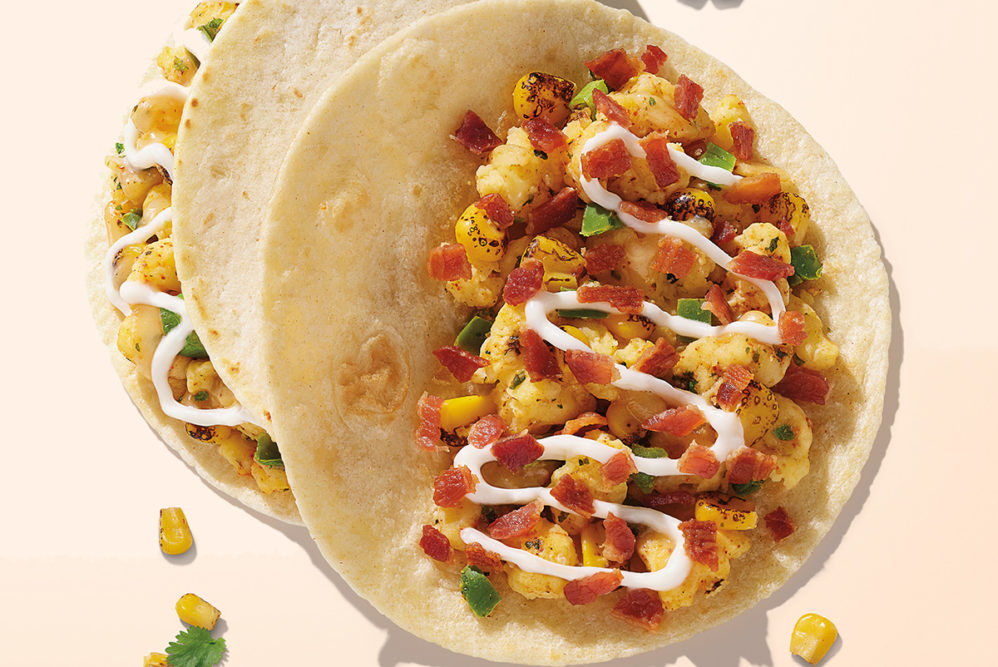With the rise of remote work blurring traditional mealtimes, operators are focusing on new opportunities to entice customers at all hours with engaging offerings, including off-hours or slow-day value deals, flexible pricing, multi-course meal bundles, meal kits and subscriptions, apparel, and more. Meanwhile, many operators plan to add to their menus more healthier and nutritious meal options, eco-friendly items, and dishes tailored to takeout in 2023.
Customers are eager to return to restaurants and reclaim a sense of community in 2023, according to the National Restaurant Association’s annual What’s Hot Culinary Forecast, which offers a detailed look at the topics, trends and products expected to drive restaurant menus in the coming year across a variety of categories.
Despite the popularity of off-premises restaurant meals and snacks during the pandemic, demand is high (70%) for in-restaurant experiences including socialization, celebration, and culinary exploration.
Hudson Riehle, senior vice president of research for the National Restaurant Association, points out that inflation is shifting consumer spending habits, and while there is a heightened appetite for restaurant experiences and connection, diners are laser focused on finding value. “The challenge is how to fuse consumer desires for the new and trendy with their expectations for price paid.”
The top trends for 2023 include experiences/local culture and community; comfort fare; flatbread sandwiches/healthier wraps; menu streamlining; and zero waste/sustainability/upcycled foods.
Consumers will be drawn to trending global flavors like Caribbean cuisines, as well as comfort foods with a twist and charcuterie boards. All of these demonstrate the type of satisfying, shared dining experience that more guests are expected to seek out in 2023.
New priorities
The foodservice industry ended last year in an environment that’s the most typical since 2019, Riehle said. Food and labor costs are the two most significant line items for a restaurant, each accounting for approximately 33 cents of every dollar in sales. Other expenses — such as utilities, occupancy, supplies, general/administrative and repairs/maintenance — combine to represent about 29% of sales. A strong majority of operators say food, labor and energy/utility costs are currently significant challenges for their restaurant.
Operators continue to have to make difficult choices to manage their profitability — everything from reducing hours to postponing expansions and even eliminating third-party delivery. Actions taken include:
- 87% of restaurants increased menu prices
- 59% changed the food and beverage items offered on the menu
- 48% reduced hours of operation on days open
- 32% closed on days that normally open
- 38% of operators say they postponed plans for expansion
- 13% of operators say they eliminated third-party delivery
- 19% postponed plans for new hiring
In the last 23 months, restaurants added nearly 2.2 million jobs. That’s 400,000 more jobs than the next closest industry — professional and business services — added in the same period, but the industry is still 462,000 below its employment level in February 2020.
According to the survey, a majority of both fullservice operators (63%) and limited-service operators (61%) say their restaurant does not have enough employees to meet customer demand.
Operators are actively looking to boost staffing levels, with 87% saying they will likely hire additional employees during the next 6-12 months if there are qualified applicants available. But 79% of operators say their restaurant currently has job openings they are having difficulty filling.
At the same time, restaurant operators will continue to balance staffing needs with business conditions. 57% of operators say they would be likely to lay off employees during the next 6-12 months if business conditions deteriorate and the U.S. economy enters a recession.
“The restaurant and foodservice industry is fueling the American economy. Our hiring rate and wage increases are outpacing the overall private sector, and this year our industry will contribute nearly $1 trillion to the economy,” said Michelle Korsmo, president & chief executive officer of the National Restaurant Association.





